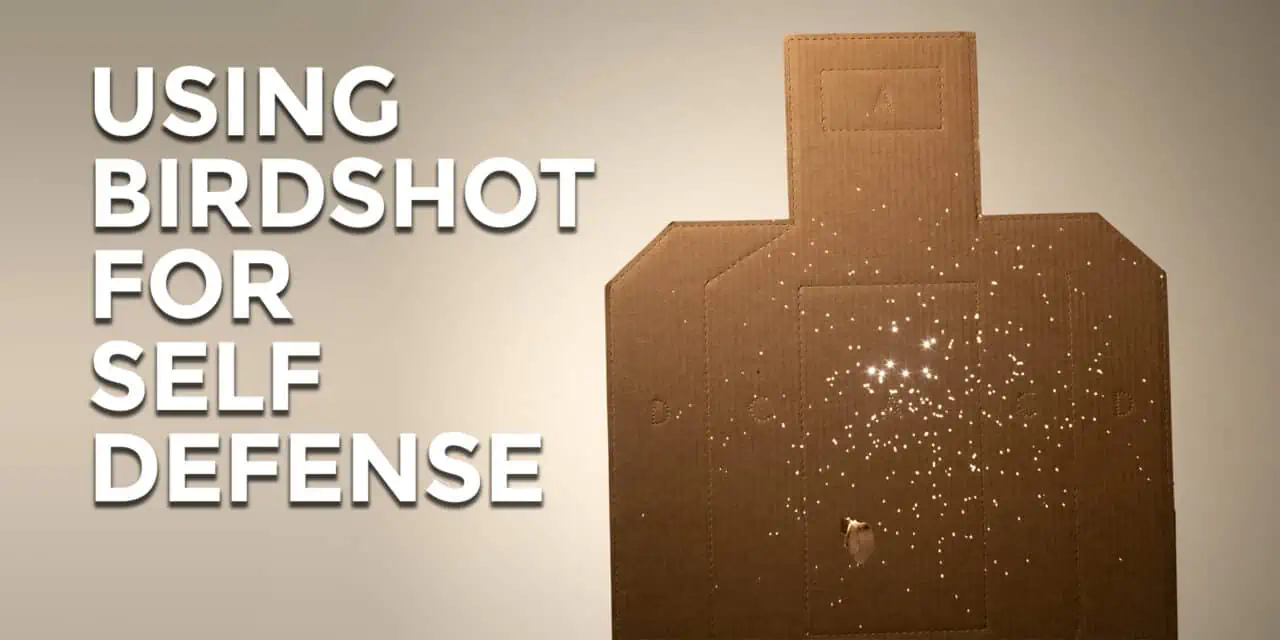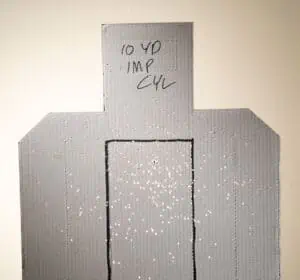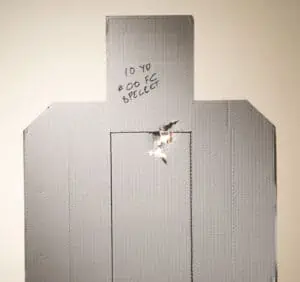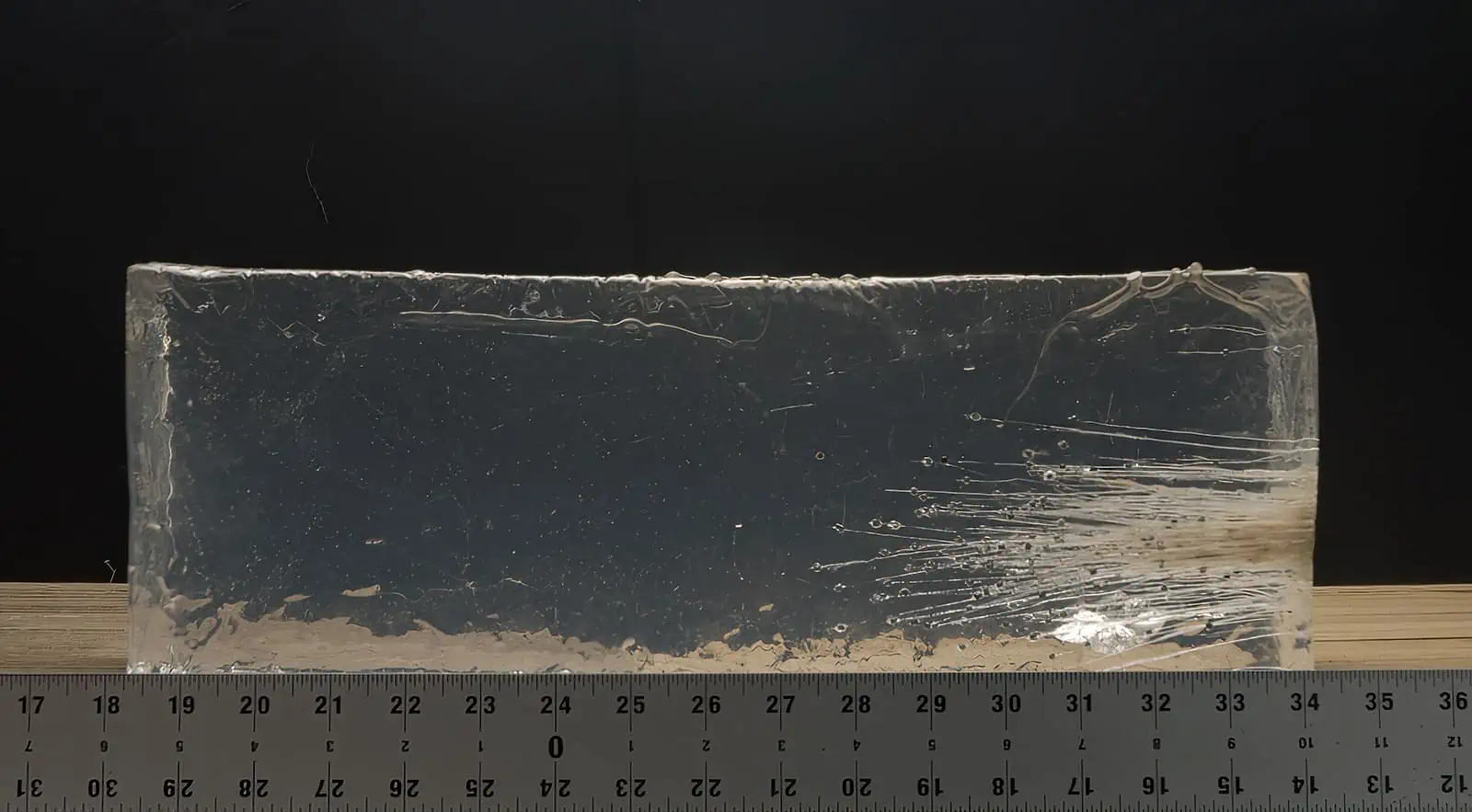Using Birdshot For Home Defense Doesn’t Work
The power of a shotgun for personal protection is unmatched when it comes to close-range personal protection. From the blunderbusses of centuries past to “riding shotgun” on a stagecoach to the trench brooms of World War I, when it’s time to stop a threat at close range, it’s time to reach for your shotgun.
Fast Facts: Using Birdshot For Home Defense
- Birdshot is for hunting birds and busting clays
- Defensive buckshot ammunition is tailor-made for personal protection
- Lower pellet weight means less penetration, less chance to stop the threat
Just having a shotgun nearby isn’t enough, though. A gun is almost useless without the right kind of ammunition, and a shotgun is no exception to this rule. When it comes to ammo selection, the versatility of the scattergun presents a unique problem. The same shotgun that can be used to hunt quail or ducks can suffice as a home defense gun, as long as you don’t make the mistake of relying on birdshot for home defense. Why is that a problem? Read on and find out.
It’s What’s Inside That Counts
First, let’s talk about what’s inside a shotshell. The amount of shot pellets inside a shotshell varies greatly. The rule of thumb to remember is the higher the number, the more pellets are inside the shell. For instance, #9 birdshot is loaded with lots and lots of tiny pellets that cover a large area when fired. #00 buckshot has only eight or nine pellets, but each of those pellets weighs about as much and travels at about the same velocity as a .32 ACP caliber bullet.
Ouch.
Numbers like this begin to show us why using birdshot for home defense is probably not a good idea. Birdshot pellets are meant to knock a flying object out of the sky, not stop an attacker from destroying your life.
Birdshot Is For The Birds
You’ll note that I said “knock a flying object out of the sky,” not “make a clean, one-shot kill.” Even the best of wingshooters know that sometimes, it’s not the impact of the pellet that finishes off the bird, it’s the fall to the ground that does them in. Even in those instances, sometimes a quick wring of the neck is required to finish off the bird. Experience tells us that birdshot isn’t a one-shot stop for birds. It stands to reason that using birdshot for home defense would be an even worse idea.
Why, then, does the idea of using birdshot for home defense seem to never go away? The answer, I think, is similar to why some people choose to use “less lethal” shotgun ammunition instead of self-defense buckshot rounds. The feeling is that rather than incapacitate an attacker, shotgun rounds should warn them off or disable them.
The Idea Of Using Birdshot For Home Defense Just Won’t Go Away
However, that’s not the role a firearm plays in personal defense. A gun, any gun, projects lethal force at a distance. It’s been that way since the days of the first handgonne, and it’ll be that way for at least the foreseeable future. If you have a need to use less-lethal force, consider something like pepper spray, and let your gun do what it’s meant to do.
We’ll use an industry standard gel test to see what the effect using birdshot for home defense really is. We should note that ballistics gel isn’t meant to show exactly what happens when a bullet impacts a human body. Rather, gel testing is used as a neutral testing medium to compare the terminal ballistics of one round to another.
Think of it this way. Cars that have a low 0-60 time tend to be sportier and faster than cars with higher 0-60 times. A 0-60 test is a good way to compare the performance of one car versus another in a neutral, repeatable setting. That’s what ballistic gel provides us. Bullets that do well in this test tend to perform well in the field, helping us choose what ammo works best in a real-world situation.
Comparing Birdshot To Buckshot
For this test, we’re going to compare the effects of a round of #7.5 birdshot versus a round of #00 buckshot, fired from a 12 gauge cylinder bore Mossberg 500. We’ll set up a block of clear ballistics gel at the standard 10 foot distance from the muzzle of the shotgun. We’ll set four layers of heavy cloth in front of the gel to test any effect that clothing might have on the path of the pellets. According to the FBI, the birdshot pellets should penetrate at least 12 inches into the gel to be effective at stopping a threat. We’ll also test a round of 12 gauge 00 buckshot as a comparison.
Test results
Simply put, birdshot is for the birds. The pellets from our test round only penetrated just over 6 inches into the gel. According to the FBI testing protocol, this is nowhere close to penetration needed to reach the vital areas of a human being. Will getting shot with a round of birdshot hurt? Yes. Will it physically stop an attacker? Probably not.
Buckshot, on the other hand, is different. The eight of the nine pellets from the round of 12 gauge #00 we tested exceeded the 16 inch minimum, and a few penetrated as far as 21 inches into the gel. Ballistics gel is not real life, but the results from this sort of thing tend to mirror real-world results. Buckshot stops the threat, birdshot doesn’t.
It’s Either Lethal Force, Or It’s Not.
This is important, because in the eyes of the law, guns are considered to be lethal force. We talked about this when we looked at less-lethal shotgun ammo, but when a shotgun comes into play, it’s considered lethal force, even if you’re just using birdshot for home defense. I must emphasize here that I’m not a lawyer and this is not legal advice, but you should choose your defensive rounds based on what they do to the target, and nothing else.
Using birdshot for home defense is one of those ideas that just never seems to go away, even when it’s been proven to be marginally effective, both in testing and in the real world. Shotguns are a devastatingly effective close-range firearm, but they need the right ammunition to do their job. Go bird hunting with birdshot. Use a round like #00 buckshot to defend what’s important to you, and get the training you need to be ready if that time should ever come.







Let me shoot you with birdshot at 5 feet and you can tell me how it doesn’t hurt.
‘Hurting’ is not the goal. STOPPING THE LETHAL THREAT pronto is the goal. Plenty of ‘hurt’ suspects have kept on going and killed victims. WAKE UP!
Moron.
this is the problem our country is facing, mythic lives and braggadocio; it seems every 20-80 years we lose touch with the preciousness of our brief and fragile lives and seem to need a good shit-kickin’ bloodbath to chill us out. As my mother used to opine, “We think we’re civilized, but we’ve got a long way to go.” Unfortunately, with the pace we’re maintaining, we may not have many more bloodbaths left. Sad, is hardly the word.
kevin, the reason many of us prefer birdshot, of course, is that killing someone is only somewhat less desirable that being killed; only a crazy would keep coming in response to a blast of 20-gauge birdshot, that said, there’s plenty more where that came from in the tube, if we’re really dealing with a murderous lunatic. if my family and i are in real danger, i want to be able to prevent it, if possible without taking another fool’s life, however foolish or out of their mind they may be–killing, by most all religions and philosophies is wrong and to be avoided where possible, can we agree on that much?
WRONG! Your goal in ANY defensive shooting is to STOP THE LETHAL THREAT pronto. Whether or not the suspect dies is up to the E.R. docs. And by the way, who in the world would believe a suspect breaking into your home has ANY compunction against killing? WAKE UP!
nope, think again, those breaking in are mostly stealth thieves, not murderers looking to spend their lives behind bars; your E.R. response is nonsense, people shoot people not doctors . . . i don’t want to be one of those people; read up on those that’ve killed, most healthy, sentient folks will tell you something dies within them.
“The answer, I think, is similar to why some people choose to use “less lethal” shotgun ammunition instead of self-defense buckshot rounds. The feeling is that rather than incapacitate an attacker, shotgun rounds should warn them off or disable them.”
I think you are largely wrong. I think a lot of folks who choose birdshot are concerned with penetration into other rooms or buildings, endangering innocents. They figure birdshot will likely put down the miscreant in the same room with them while perhaps not killing their own kids down the hall. This may be a particular concern in apartment buildings, etc.
I don’t totally disagree with the article, but – aside from the penetration issue mentioned by Jeff, I pulled out a 6-inch ruler and put on my chest. I’m pretty sure six inches from my skin you’re into heart, lungs, etc.
All depends on application. Self-defense at my cabin would unquestionably entail buckshot (if using shotgun instead of something else, obviously). At a city house, the range would be much closer and I worry about neighbors. So, if it’s not a pistol or short-barreled rifle, I might choose something smaller than 00 buck. How would that ballistic test come out using, say, a turkey round?